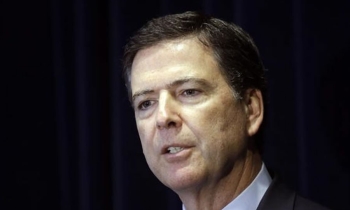This is yet another attempt to occupy the advertisers' mindspace.
English daily Hindustan Times (HT) and business newspaper Business Standard (BS) have forged a strategic alliance to jointly promote display (all corporate and premium product advertising), appointments and financial category advertisements. With equally potent combinations present in the market - in the form of The Times Of India (TOI)-The Economic Times (ET); Indian Express-Financial Express; The Hindu-The Hindu Business Line - the alliance between Hindustan Times and Business Standard was a matter of time.
But this is not the first such tie-up for HT. In March 2001, it had tied up with Deccan Chronicle, Deccan Herald, Mid-Day and Indian Express to promote appointments advertising. And in August last year, Hindustan, the group's Hindi newspaper, had forged an alliance with Amar Ujala to jointly promote display advertising. On its part, BS had entered a marketing and content sharing arrangement with The Statesman in December last year.
Elaborating on how the two stand to benefit through the current tie-up, Rakesh Shah, vice-president, marketing, Business Standard, says, "We are weak in appointments ads, so that is where HT helps in driving that section and gets access to more product categories. In its turn, BS will push the financial category advertising for HT. In addition, while HT gives BS the numbers, BS will provide its partner with quality readers, which is our core strength. Thus the advertisers have a strong package."
No details however were available on the exact financial arrangement between the two. While Mrinalini Gupta, vice-president, marketing, Hindustan Times, skirted the issue, she seemed quite excited about the alliance. "A business daily was missing in our bouquet and both HT and BS stand to gain from this alliance," she remarks. Yet a number of questions remain.
First, since both HT and BS have a few pockets of strength, what purpose does the alliance really serve on a national scale? "Let me give you an example," replies Shah, "When there is a national product launch, the advertiser and the media planners look for regionally strong papers. Therefore, to advertise in Bangalore, one would not look at TOI, Bangalore, but for newspapers strong in that region, which could be The Hindu or Deccan Herald. Since HT is very strong in the north, this alliance helps us provide localised packages."
The overriding objective thus is to increase the advertising revenue with a bigger share of the market. "What we are offering our advertisers are cost effective deals, better quality target group, and convenience of purchase. With the alliance, the sales staff of BS and HT multiplies. Thus in terms of placing business we are more approachable and accessible," adds Shah.
Some observers however feel the alliance may not be so attractive for media planners after all. For one, Bashab Sarkar, managing director, Maximize India, says, "For a financial daily, additional numbers' is not a selling proposition. When a media planner or an advertiser plans to place an ad in a financial daily, he really looks at whether the readership profile of the financial daily complements the purpose."
While Bashab Sarkar thinks that the choice of a financial daily is determined by the image it carries, Gopinath Menon, vice-president, TBWAAnthem, feels that subsidised rate cards, may not attract advertisers across markets. "In my view attractive price deals are not the sole criterion for advertisers or media planners. What is also important is how the packages are marketed and merchandised to the advertisers. Yet I'd tend to believe this alliance will work. Both stand to benefit, especially because the Delhi market is as good as Mumbai today."









